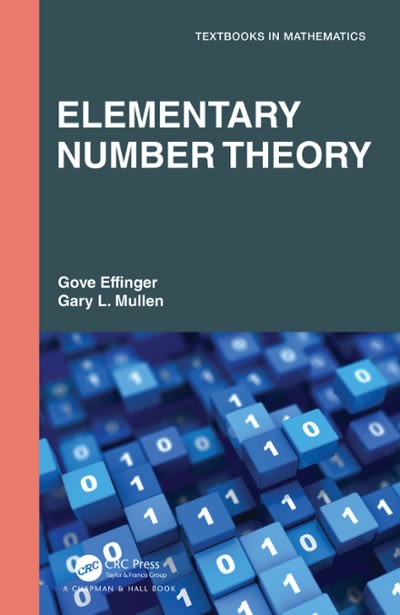
10.3
1. A psychologist obtains a random sample of 20 mothers in the first trimester of their pregnancy. The mothers are asked to play Mozart in the house at least 30 minutes each day until they give birth. After 5 years, the child is administered an IQ test. It is known that IQs are normally distributed with a mean of 100. If the IQs of the 20 children in the study result in a sample mean of 103.9 and sample standard deviation of 14.7, is there evidence that the children have higher IQs? Use the a = 0.05 level of significance. Click here to view the standard normal distribution table (page 1)." Click here to view the standard normal distribution table (page 2).2 Click here to view the table of critical t-values. What type of hypothesis test is appropriate to conduct for this research? O A. Hypothesis test on a population proportion B. Hypothesis test on a population standard deviation C. Hypothesis test on a population mean Determine the null and alternative hypotheses. Ho : H 4 5 (1) (2) (Type integers or decimals. Do not round.) Which distribution should be used for this hypothesis test? A. The chi-square distribution because the parameter is o or ", and the model conditions are satisfied. O B. The normal distribution because the parameter is a proportion, p, and the model conditions are satisfied. O C. The Student's t-distribution because the parameter is the mean, . is not known, and the model conditions are satisfied. O D. The normal distribution because the parameter is the mean, o is known, and the model conditions are satisfied. Calculate the test statistic. Test statistic = (Round to two decimal places as needed.) Approximate the P-value. The P-value is in the range (3) State the conclusion for the test. Choose the correct answer below. A. Reject Ho. There is sufficient evidence at the a = 0.05 level of significance to conclude that mothers who listen to Mozart have children with higher IQs. O B. Do not reject Ho. There is not sufficient evidence at the a = 0.05 level of significance to conclude that mothers who listen to Mozart have children with higher IQs. O C. Reject Ho. There is not sufficient evidence at the a = 0.05 level of significance to conclude that mothers who listen to Mozart have children with lower IQs. O D. Do not reject Ho. There is sufficient evidence at the a = 0.05 level of significance to conclude that mothers who listen to Mozart have children with lower IQs. 1: Standard Normal Distribution Table (page 1) Area - Table V Standard Normal Distribution 2 0.00 0.01 1.02 1.03 0.04 0.05 1.06 0.07 0.08 0.09 -3.4 0.0003 0.0003 0.0003 0.0003 0.0003 0.0003 0.0003 0.0003 0.0003 0.0002 -3.3 0.0005 0.0005 0.0005 ).0004 0.0004 0.0004 0.0004 0.0004 0.0004 0.0003 -3.2 0.0007 0.0007 0.0006 0.0006 0.0006 0.0006 0.0006 0.0005 0.0005 0.0005 -3.1 0.0010 0.000 0.0009 0.0009 0.0008 0.0008 0.0008 0.0008 0.0007 0.0007 -3.0 0.0013 0.0013 0.0013 0.0012 0.0012 0.0011 0.0011 0.0011 0.0010 0.0010 -2.9 0.0019 0.0018 0.0018 0.0017 0.0016 0.0016 0.0015 0.0015 0.0014 0.0014 1.0026 ).0025 ).0024 J.0023 0.0023 0.0022 0.0021 0.0021 0.0020 0.0019 0.0035 0.0034 0.0033 0.0032 0.0031 0.0030 0.0029 0.0028 0.0027 0.0026 2.6 0.0047 0.0045 0.0044 0.0043 0.0041 0.0040 0.0039 0.0038 0.0037 0.0036 25 0.0062 0.0060 0.0059 0.0057 0.0055 0.0054 0.0052 0.0051 0.0049 0.0048 -2.4 0.0082 0.0080 0.0078 0.0075 0.0073 0.0071 0.0069 0.0068 0.0066 0.0064 0.0107 0.0104 ).0102 J.0099 0.0096 0.0094 0.0091 0.0089 0.0087 0.0084 -2.2 0.0139 0.0136 0.0132 0.0129 0.0125 0.0122 0.0119 0.0116 0.0113 0.0110 0.0179 ).0174 0.0170 0.0166 0.0162 0.0158 0.0154 0.0150 0.0146 0.0143 -2.0 0.0228 0.0222 0.0217 0.0212 0.0207 0.0202 0.0197 0.0192 0.0188 0.0183 -1 0.0287 0.0281 0.0274 0.0268 0.0262 0.0256 0.0250 0.0244 0.0239 0.0233 0.0359 .0351 ).0344 J.0336 0.0329 0.0322 0.0314 0.0307 0.0301 0.0294 1.7 0.0446 0.0436 0.0427 0.0418 0.0409 0.0401 0.0392 0.0384 0.0375 0.0367 1.6 0.0548 0.0537 0.0526 0.0516 0.0505 0.0495 0.0485 0.0475 0.0465 0.0455 -15 0.0668 0.0655 0.0643 0.0630 0.0618 0.0606 0.0594 0.0582 0.0571 0.0559 -1.4 0.0808 0.0793 0.0778 0.0764 0.0749 0.0735 0.0721 0.0708 0.0694 0.0681 -1.3 0.0968 .0951 ).0934 0.0918 0.0901 0.0885 0.0869 0.0853 0.0838 0.0823 -1.2 0.1151 0.1131 0.1112 0.1093 0.1075 0.1056 0.1038 0.1020 0.1003 0.0985 -1.1 0.1357 ).1335 0.1314 0.1292 0.1271 0.1251 0.1230 0.1210 0.1190 0.1170 -1.0 0.1587 0.1562 0.1539 ).1515 0.1492 0.1469 0.1446 0.1423 0.1401 0.1379 -0.9 0.1841 0.1814 0.1788 0.1762 0.1736 0.1711 0.1685 0.1660 0.1635 0.1611 -0.8 0.2119 0.2090 ).2061 J.2033 0.2005 0.1977 0.1949 0.1922 0.1894 0.1867 -0.7 0.2420 0.2389 0.2358 0.2327 0.2296 0.2266 0.2236 0.2206 0.2177 0.2148 -0.6 0.2743 0.2709 0.2676 0.2643 0.2611 0.2578 0.2546 0.2514 0.2483 0.2451 -0.5 0.3085 0.3050 0.3015 0.2981 0.2946 0.2912 0.2877 0.2843 0.2810 0.2776 -0.4 0.3446 0.3409 0.3372 0.3336 0.3300 0.3264 0.3228 0.3192 0.3156 0.3121 -0.3 0.3821 0.3783 0.3745 0.3707 0.3669 0.3632 0.3594 0.3557 0.3520 0.3483








